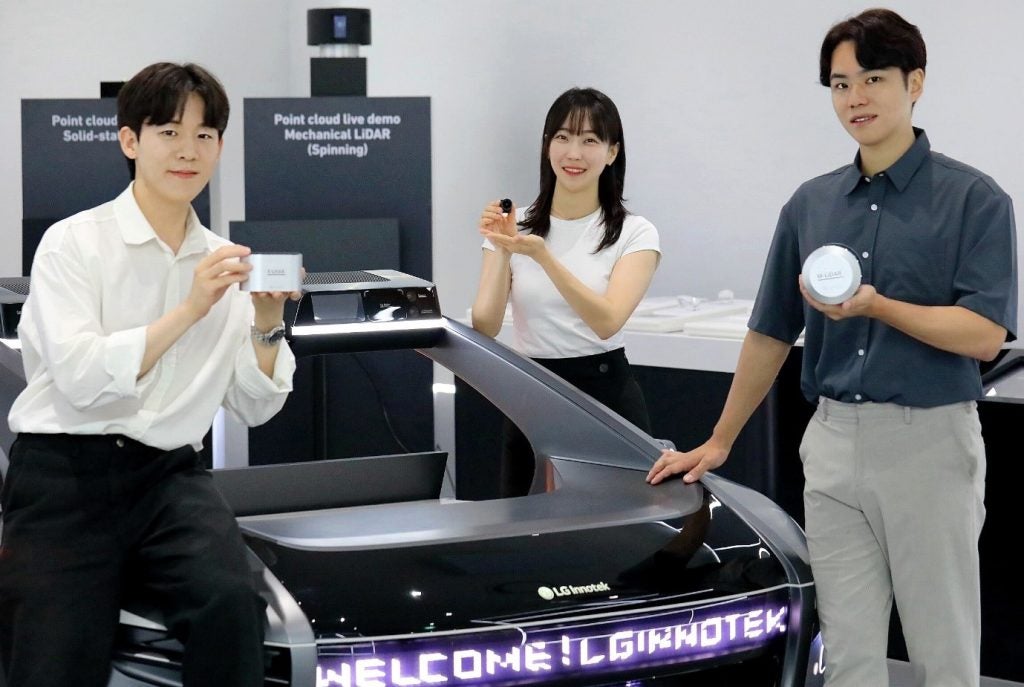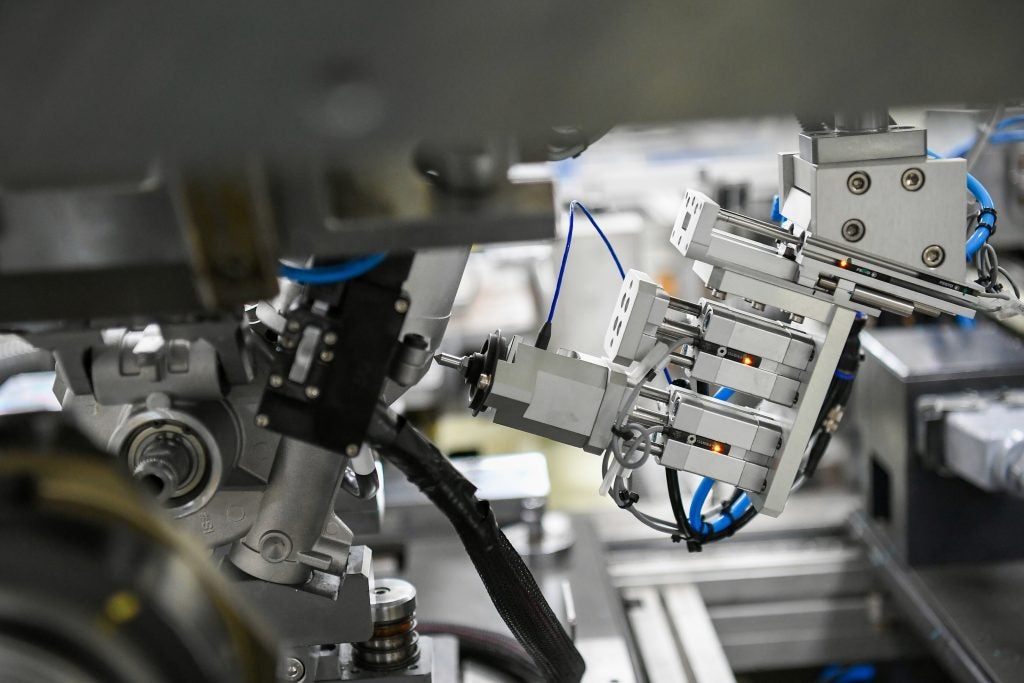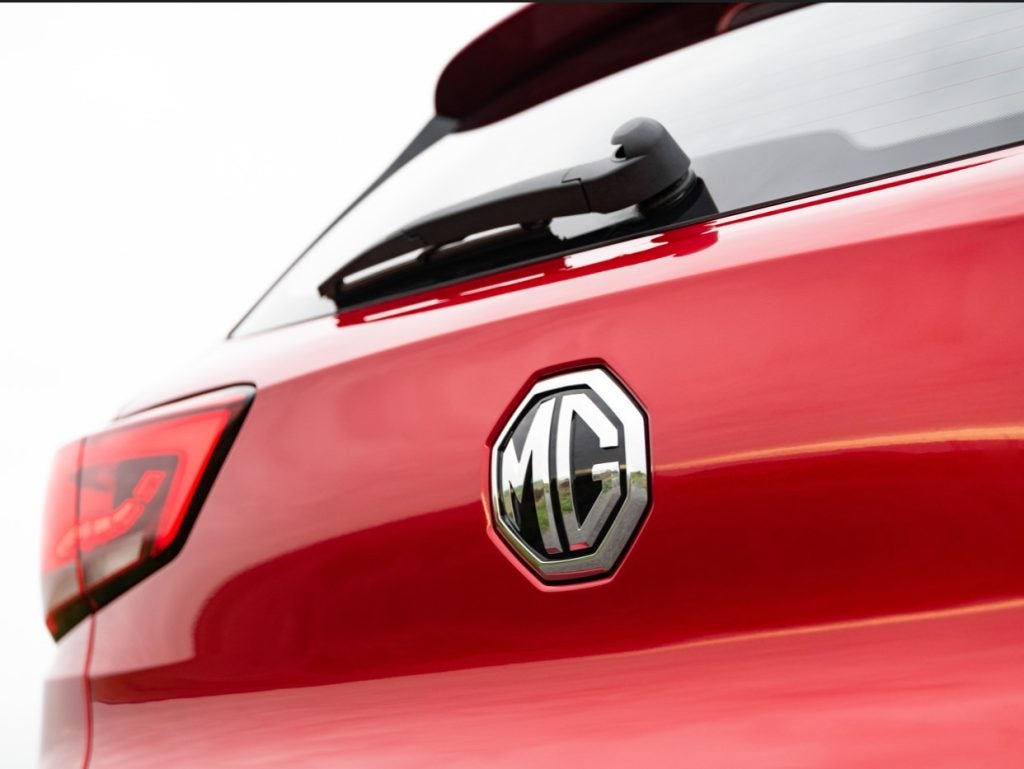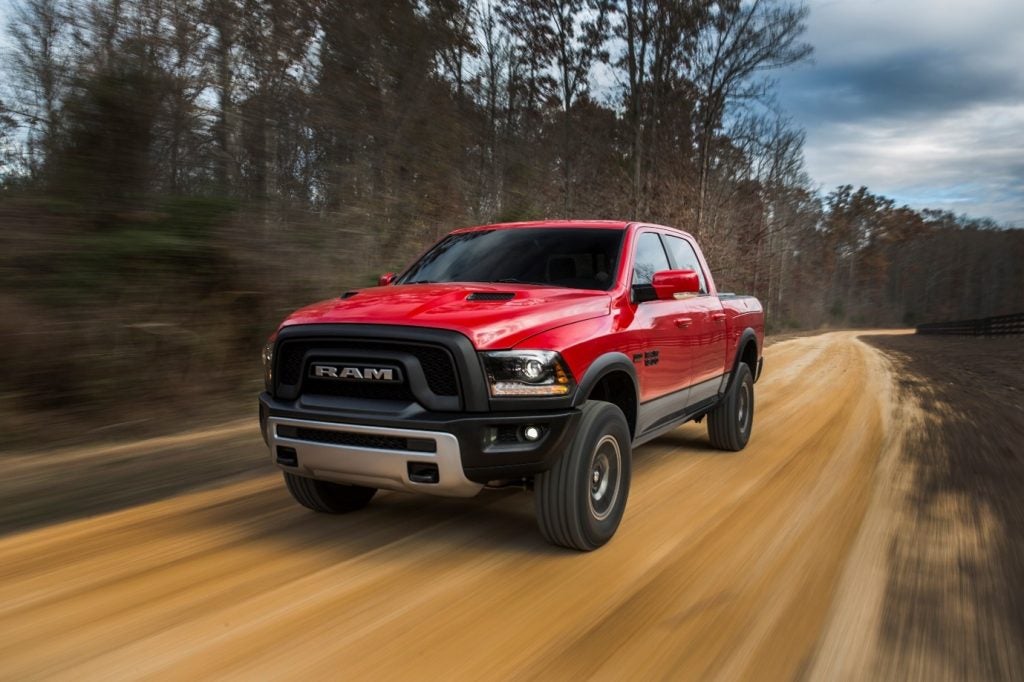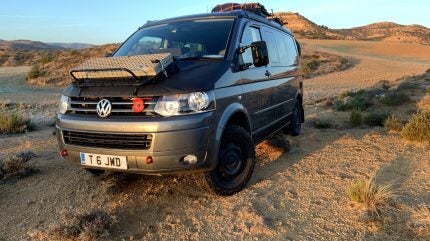
Acting as more than a slogan or advertising tagline, Volkswagen’s ‘Drive Bigger’ motto is a long-term vision for the brand and company – it has certainly been achieved by Guy Deacon.
Over the past year, retired British army officer Guy Deacon set out to take on the challenge of Africa’s unique and vast landscapes, travelling 18,000 miles solo down the west coast of Africa in his 4×4 VW 5.1 Transporter.
Guy’s journey saw him driving across 25 international borders through the Sahara Desert, Morocco, Western Saharah, Mauretania, The Sahel in Mauritania, Senegal, and across Namibia’s Namib Desert which has some of the world’s highest sand dunes.
What made this even more inspiring was that Guy completed his journey while suffering from Parkinson’s disease – the fastest-growing neurodegenerative illness worldwide with no known cause or cure. The condition means Guy had very little use of his hands, difficulty moving his limbs, and poor spatial awareness. He frequently had to stop to sleep, or appeared drunk with slurred speech when his medication ran out. Guy wanted to show that life doesn’t have to end with a Parkinson’s diagnosis and that nothing is impossible if you put your mind to it.
Frankie Youd spoke to Guy to learn more about the experience, the modifications he made to the VW undertaking the journey and to discuss the toughest mechanical hurdles.
How well do you really know your competitors?
Access the most comprehensive Company Profiles on the market, powered by GlobalData. Save hours of research. Gain competitive edge.

Thank you!
Your download email will arrive shortly
Not ready to buy yet? Download a free sample
We are confident about the unique quality of our Company Profiles. However, we want you to make the most beneficial decision for your business, so we offer a free sample that you can download by submitting the below form
By GlobalData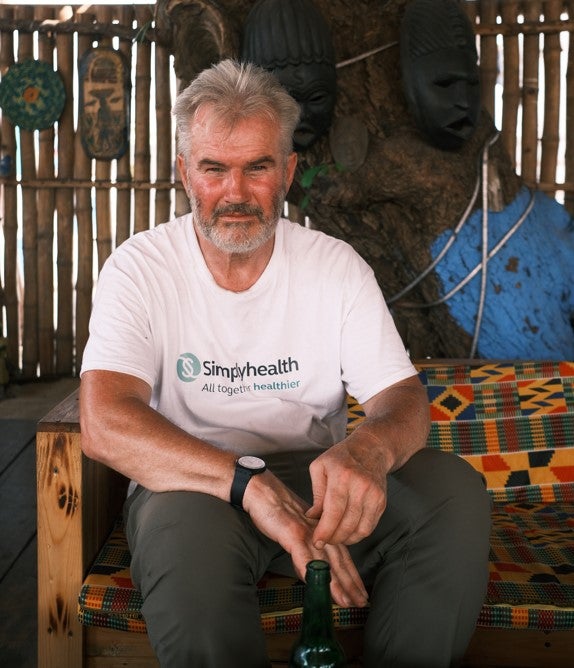
Just Auto (JA): What inspired you to make the journey?
Guy Deacon (GD): The idea came to me at school back in 1980. I received a book through the post which had some photographs on the cover of some Land Rovers and the Sahara sun setting behind them, and I thought that was so cool.
I wanted to set my goal to do that when I grew up and had the money to pay for it. I never thought I would. When I joined the Army as a young officer, I travelled quite a lot at that point and the idea remained in my mind.
What made you decide on the VW over other vehicles?
There’s lots of reasons. When I was on one of my army trips, travelling in a Bedford army 4-tonne vehicle in Kenya, we were cruising through the dunes of Algeria, and there was an American couple, and they were driving a VW T25 Syncro.
They would stop, pop the roof up, have a cup of tea and read their books. The point was that you could live in the vehicle, and you didn’t have to live outside of the vehicle. For me, in my condition, especially travelling by myself, being able to live inside the vehicle, rather than out of the vehicle, makes a huge difference.
I fell in love with it, and I later bought a VW Synchro, which was the most brilliant machine I ever had in terms of capability. I would have taken it on the trip, but it was a bit too old and rusty. I got rid of it, sadly, and got a VW T5.1, which is the modern equivalent.
Most people in Africa don’t have four-by-four vehicles; they have two-wheel drives like Toyotas and Nissans. So, most the time you get anywhere you want in an ordinary car; that’s what they do. But if you want to go visit various out-of-the-way places and you want to have a bit of security and be confident, a four-by-four is obviously very useful. But you don’t need to have a muscle-bound vehicle to do it.

What changes and modifications did you make to the vehicle so it could complete the journey?
I went to Volkstrek in Aberystwyth [Wales]; they put a Seikel suspension on it, which is a two-inch lift and is heavier duty – the springs and shock absorbers are changed to achieve that. That meant I could put on slightly larger wheels. I ran BF Goodrich and it is important to have the right tyres.
Most people don’t expect these vehicles to be taken off road
I had an under-armour fitted in the front and the back. I had bash plates underneath also, so I would be able to drive over rocks and difficult landscapes, and I wouldn’t have to worry about it.
Most people don’t expect these vehicles to be taken off road and therefore they don’t have hardpoints front and back – I had those fitted.
I also then made some jerrycan carriers to fit on the back bumper, which was a homemade thing which would work very well. I had the extra spare wheel on the back door, which meant the hydraulic rams that push the door up had to be improved as well.
On the inside, as anybody who has a VW T5.1 knows, the factory-fitted rock and roll bed is really good but really, really heavy. It doesn’t move backwards or forwards so you can’t stand anything in front of it or behind it, which is inconvenient. I therefore took that out and I replaced it with a bench which I could take out, and then rearrange to make a bed and the bottom.
I lived on a bunch of packing crates which were all strapped to the floor, which meant that I could carry more kit. It was more organised and I could live in it more easily without the heavy bed rocking back and forth the whole time!
They were the main changes I made. They weren’t essential, but they were jolly useful. I had everything I thought I needed for years. I had high lift jacks, I had hydraulic bottle jacks and I had loads of tools as well. I did not carry many spare parts, because I figured that whatever spares I would need I wouldn’t have on the day anyway, so there was no point taking it all. I also thought I’d be able to get them on the way – which proved to be something of an error. In reality, I couldn’t get some of them on the way. So, I had things to fix things myself where I could.
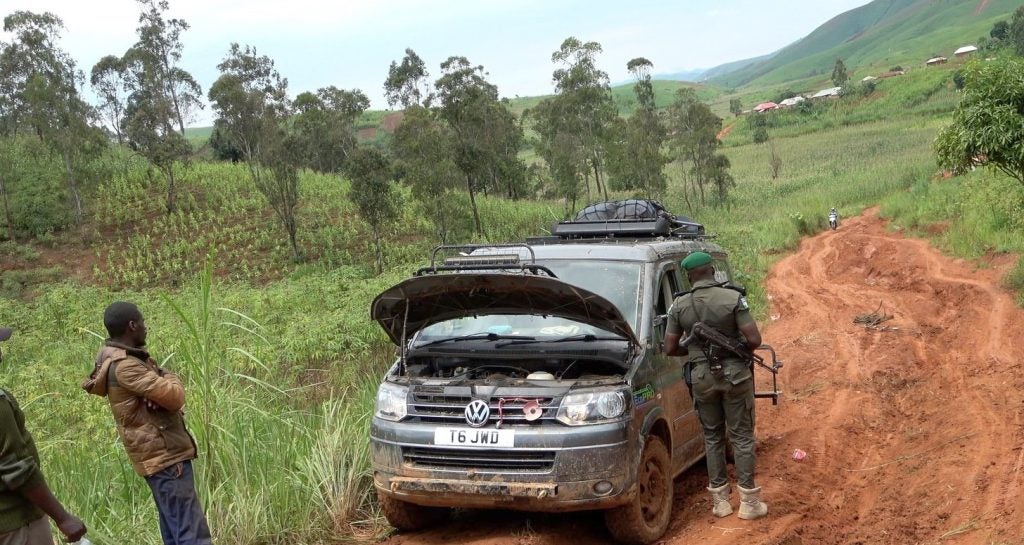
What was one of the most challenging mechanical difficulties that you faced?
What I should have known more about was the shock absorbers and the potholes. I know there’s potholes and bumps and that shock absorbers don’t always last, but I should have taken some spare shock absorbers. I didn’t because they’re heavy, and I didn’t really think about it.
The other thing that was more complicated was I got through two clutches. That was partly because of the conditions, but partly because my own driving technique. On the first occasion somebody flew out with the critical part in their hand luggage, which was fitted in 24 hours and off we went.
It was all about managing potholes and corrugations because they can rattle a car to pieces.
Did you receive help along the way from locals?
I’m quite mechanically minded, so I could do little bits and pieces but I’m not capable of doing what I know I used to be able to do. Incredibly, and this is quite extraordinary, you think that with modern cars you can’t do the complex stuff and diagnostics. But in my experience bush mechanics are just brilliant.
They can take a modern car to bits and put it back together; it’s extraordinary. I’ve got photographs with literally the whole frame taken off, no instructions, no guide as to how to do it, and then all put back together again, working perfectly – quite extraordinary.
There was one chap. I had hit a big pothole really badly and I had bent one of the front shock absorbers so the wheel was no longer vertical, the drop links broken as well. He arrived with a bag of spanners, a small bag, a handkerchief and a tin of oil. My son had flown out with the spare parts that were needed, and then he put it all together with hardly any help or any tools at all. It was absolutely fine. Quality extraordinary.
When I got to Namibia, suddenly there were Volkswagen garages everywhere. The VW staff and all the guys in Namibia were fantastic. They serviced the car about five times. In amongst the potholes and corrugations, the U-bolts – that retain the prop-shaft and stop it wobbling around – fractured and broke. The prop shaft was moving all the time and wore out the splines. You can’t buy one of them for love nor money. The chap said: “l’ll tell you what I will do. There’s a vehicle over there which is waiting for radiator, and it’s been waiting a while. I’ll get him to sell you his prop-shaft.”
So, we took it off of the other vehicle, put it on mine and we were good as gold!
Did the WV prove itself to be a reliable vehicle for you?
I have to say when I got it right, and I remembered to put the tyre pressure down and I chose my route properly, it was exceptional. It climbed any sand dunes and over the softest sand you can imagine. It would have been brilliant if I hadn’t had Parkinson’s and had more control over my feet. It’s an amazing machine with the right tyres.
It’s a manual gearbox and gear changing is a bit of a complication if you’ve got Parkinson’s. That I think is part of the reason I had a problem. Also, the conditions were very difficult. There were potholes everywhere, wherever you went.
It was exceptional. It climbed any sand dunes and over the softest sand you can imagine.
It also doesn’t look out of place when you’re driving through an ordinary town, so people weren’t attracted to it. Even if they were, everything was safe and secure inside rather than outside.
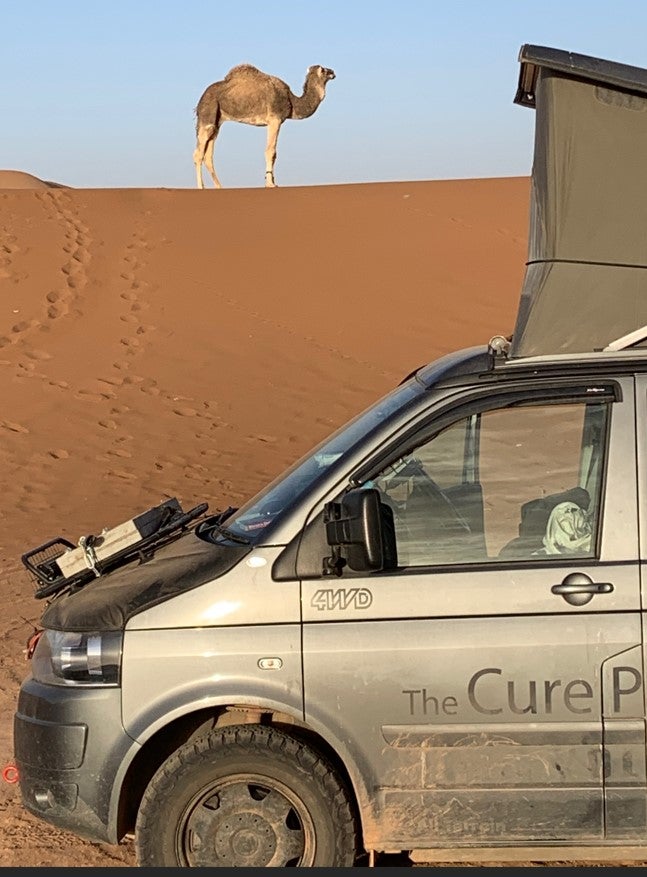
What advice would you give to people who would like to experience what you have?
There was a time I wouldn’t have done it in a VW, but taking whatever is local is a really good idea. Toyota does make sense because they absolutely know how to fix them almost everywhere you go. So work out what vehicle is used locally and go with that.
Secondly, try and avoid spending too much money on your vehicle because it then becomes too precious, and you become kind of tied to it; you can become really close to it. You get very worried if anything happens to it – something will happen, of course.
The driving aspect is fantastic, and I love doing it and I love seeing the country emerging in front of me.
You should really go with the cheapest car you can get away with that’s going to be reliable. If it does go badly wrong, you can just abandon it and not worry about it. Otherwise, you end up being beholden to a precious vehicle and maybe don’t leave it as readily when on your travels. The aim of the trip is to do the things on the trip rather than just live by your vehicle.
The driving aspect is fantastic, and I love doing it and I love seeing the country emerging in front of me. You don’t want to think to yourself: I can’t do this because the vehicle is too precious. It’ll limit the way you behave.
Also, carry as little as you really need by way of general supplies – the locals will help you out on the way.



